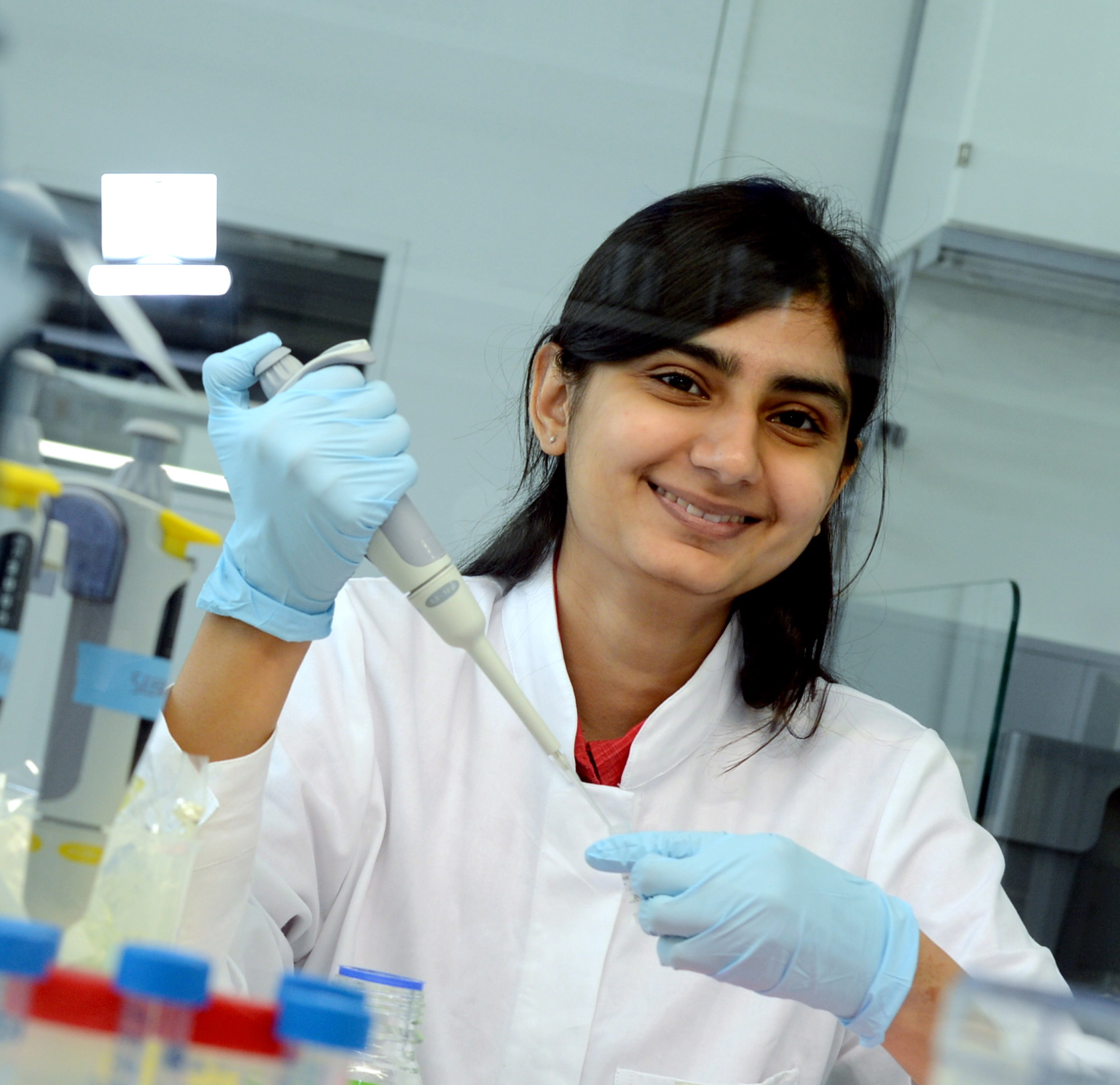

Participating groups
Correia-Melo Research Group
Dönertas Research Group
Englert Research Group
Ermolaeva Research Group
Kaether Research Group
Kirstein Research Group
Valenzano Research Group
Waskow Research Group
Winek Research Group
Information on the LGSA
Application guideline
https://lgsa.leibniz-fli.de/
application/application-guideline/
PhD Positions:
Project proposals for Call No. 25/11
Clara Correia-Melo
Dissecting host-microbiome metabolism in aging
Cellular senescence is marked by irreversible cell cycle arrest and the secretion of pro-inflammatory and oxidative factors that impair tissue function. In the gut, senescent intestinal fibroblasts disrupt intestinal stem cell differentiation, contributing to functional decline. Emerging evidence further implicates senescence in driving microbial dysbiosis with age.
Our previous work in eukaryotic microbial systems has shown that metabolic interactions between cells and their surrounding environment critically influence cellular aging, viability, and drug response. Despite extensive focus on protein-mediated signaling in senescence, the metabolic dimension of this intercellular communication has been largely overlooked-often due to the use of metabolite-rich culture media that obscure physiologically relevant metabolic interactions.
To address this, we have developed a high-throughput platform to analyze human cells cultured in Human Plasma-Like Medium (HPLM), which better mimics in vivo conditions. Using this platform, we will profile the intracellular metabolome and senescence-associated extracellular metabolic environment of human colonic cells, and assess their impact on a panel of ~80 representative gut bacterial strains.
This study will identify metabolic conditions that modulate dysbiosis, potentially informing the development of metabolism-targeted therapies for aging and age-related diseases. By integrating bacterial proteomics, metabolomics, and metabolic modeling, we will uncover the molecular mechanisms through which senescence-derived exometabolomes alter microbial fitness, shedding light on the metabolic drivers of dysbiosis in aging.
Melike Dönertas
Comparative Systems Biology of Aging
The biology of aging involves complex interactions among gene regulation, microbiome dynamics, and evolutionary processes. This project invites an excellent doctoral candidate to investigate aging mechanisms through a systems biology approach, with the flexibility to pursue one or more of the following directions: (1) comparative analysis of age-related changes in gene expression and microbiome composition across short- and long-lived species or populations; (2) integrative analysis of multi-omic datasets to identify pharmacological or lifestyle interventions that mitigate aging phenotypes; and/or (3) analysis of tissue- and cell-type-specific identity shifts during aging, including their molecular drivers and functional consequences. Depending on the candidate’s background and interests, the project can involve experimental data generation (e.g., metagenomics, RNA-seq, scRNA-seq, proteomics) or be conducted entirely computationally. The overarching goal is to uncover conserved and targetable features of aging, offering both a mechanistic understanding and translational potential.
Relevant References:
Izgi, H., Han, D., Isildak, U., Huang, S., Kocabiyik, E., Khaitovich, P., Somel, M., & Dönertaş, H. M. (2022). Inter-tissue convergence of gene expression during ageing suggests age-related loss of tissue and cellular identity. eLife, 11, e68048. https://doi.org/10.7554/eLife.68048
Dönertaş, H. M., Fabian, D. K., Fuentealba, M., Partridge, L., & Thornton, J. M. (2021). Common genetic associations between age-related diseases. Nature Aging, 1(4), 400–412. https://doi.org/10.1038/s43587-021-00051-5
Dönertaş, H. M., Fuentealba, M., Partridge, L., & Thornton, J. M. (2019). Identifying Potential Ageing-Modulating Drugs In Silico. Trends in Endocrinology and Metabolism: TEM, 30(2), 118–131. https://doi.org/10.1016/j.tem.2018.11.005
Turan, Z. G., Parvizi, P., Dönertaş, H. M., Tung, J., Khaitovich, P., & Somel, M. (2019). Molecular footprint of Medawar’s mutation accumulation process in mammalian aging. Aging Cell, 348, e12965. https://doi.org/10.1111/acel.12965
Dönertaş, H. M., Fuentealba Valenzuela, M., Partridge, L., & Thornton, J. M. (2018). Gene expression-based drug repurposing to target aging. Aging Cell, 17(5), e12819. https://doi.org/10.1111/acel.12965
Christoph Englert
Extension of lifespan and health span through partial reprogramming
The short-lived African killifish Nothobranchius furzeri is an important model for aging research since it displays essential hallmarks of mammalian aging – a process that may be reversible through cellular reprogramming. Previous studies using eukaryotic cells or rodents have shown that pulsed induction of OSK-factors (OCT4, SOX2, and KLF4) can restore youthful DNA methylation patterns and cellular physiology. Evidence indicates that systemic OSK induction can prevent motoric as well as memory deterioration in mice when applied early in life. However, studies on cellular reprogramming in N. furzeri are lacking. Also, while reprogramming has shown lifespan extensions in progeroid models, the question remains whether it can also prolong lifespan in healthy animals.
Various transgene expression systems have been adopted across a wide range of organisms. However, many of those display leaky transgene expression or are unsuitable for long-term organismic research due to toxicity or epigenetic silencing. Recently, an inducible transgene switch (IQ-Switch), which is free of driver toxicity, transgene silencing, and exhibits highly tunable transgene activation, was established for zebrafish. CRISPR-Cas9 has facilitated the induction of sequence-specific mutations and paved the way for target-directed insertion of a transgene by homologous directed repair into the N. furzeri genome. In the proposed project we will be using this method. The inducible IQ-Switch driving the OSK-factors will be integrated into N. furzeri to create a transgenic line for controlled and systemic OSK expression at young age, facilitating analysis of age-associated phenotypes after reprogramming. To achieve this, OSK will be placed under the control of the ubiquitously expressed ubl5 (ubiquitin-like 5) promoter, allowing pulsed systemic transgene expression. Physiological assays will be used to examine the effects on memory, bone structure, and organ integrity. Additionally, molecular analyzes of histone modifications will provide insights into epigenetic effects, aiming to provide evidence for safe reprogramming strategies to investigate age-related diseases. Finally, we will assess whether pulsed reprogramming can extend lifespan and health span in killifish.
Maria Ermolaeva
Food for thought: unravelling the cognitive effects of dietary restriction.
While many studies suggest that dietary interventions such as caloric restriction and intermittent fasting support cognitive health in aging, other findings—particularly from rodent models and some human studies—indicate a more complex picture. Studies report impaired attention, reduced cognitive flexibility, and increased anxiety under certain dietary restriction conditions. Are these divergent outcomes driven by the severity and duration of restriction, or do factors such as age and sex play a more critical role?
This project aims to disentangle these variables using the genetically tractable and short-lived model organism Caenorhabditis elegans. We will systematically expose young and old male and female (hermaphrodite) worms to varying intensities of dietary restriction (DR), employing the DR mimetic metformin to ensure precise and reproducible modulation. Behavioural assays will be used to assess cognitive function (associative learning), anxiety- and apathy-like responses, and neuromuscular performance. These phenotypic outcomes will be integrated with genetic and molecular analyses to identify key pathways responding to dietary restriction that affect cognition and behaviour, and how age, sex, and restriction severity shape them. This work will provide fundamental insight into the nuanced impact of dietary restriction on cognition and behavioural health.
Christoph Kaether
Novel Mechanisms of Microcephaly Driven by Early Secretory Pathway Proteins
Mutations in YIPF5 and IER3IP1, membrane proteins that cycle between the endoplasmic reticulum (ER) and the Golgi apparatus, lead to a severe neurodevelopmental disorder known as MEDS (Microcephaly, Epilepsy, and Diabetes Syndrome). Our previous research demonstrated that YIPF5 and IER3IP1 are critical regulators of protein export from ER exit sites (ERES), specifically affecting the trafficking of a subset of secreted and membrane-bound proteins.
This project aims to elucidate the molecular mechanisms by which YIPF5 and IER3IP1 control cargo export from ERES and to investigate how these processes impact neuronal development and contribute to the pathogenesis of microcephaly. To this end, we employ a multidisciplinary approach combining live-cell imaging in cultured primary neurons and human iPSC-derived neurons, proteomic and biochemical analyses of protein-protein interactions, and in vivo studies using mouse models. More information can be found in Anitei et al. DOI 0.1007/s00018-024-05386-x
Janine Kirstein
Analysis of the susceptibility of specific neurons for neurodegenerative disease-associated proteins
Our lab studies aging-associated pathologies such as Alzheimer’s and Huntington’s disease. We use the nematode C. elegans to model these neurodegenerative diseases to study the aggregation and proteotoxicity with the progression of aging. For that, we use advanced imaging techniques such as fluorescence lifetime imaging and GCaMP analyses to monitor the activity of specific neurons. We have observed that the spatial and temporal onset of aggregation differs for different amyloid proteins. Certain neurons are more susceptible for the aggregation of e.g. Abeta and also show earlier loss of function and neurodegeneration. This PhD project will study the molecular differences between neurons that lead to the different vulnerabilities towards different amyloid proteins. For that, you will use C. elegans models that express human Abeta, tau and Huntingtin to study proteostasis capacities such as the activity of molecular chaperones, the proteasome and autophagy of selected neurons and neuronal networks. In addition, you will complement the organismal and cellular studies with mechanistic in vitro analyses. For that, you will study the ability of chaperones to regulate the folding of the amyloid proteins from the native state to the formation of oligomers, condensates and amyloid fibrils using spectroscopic techniques.
Selected references relevant for the project:
Ayala Mariscal SM, Pigazzini ML, Richter Y, Özel M, Grothaus IL, Protze J, Ziege K, Kulke M, ElBediwi M, Vermaas JV, Colombi Ciacchi L, Köppen S, Liu F, Kirstein J; Identification of a HTT-specific binding motif in DNAJB1 essential for suppression and disaggregation of HTT. Nature Communications, 2022 Aug 10;13(1):4692
Pigazzini ML, Lawrenz M, Margineanu A, Kaminski Schierle GS, Kirstein J; An expanded polyproline domain maintains mutant huntingtin soluble in vivo and during aging. Frontiers in Molecular Neuroscience, 2021 Oct 15;14:721749
Gallrein C, Iburg M, Michelberger T, Koçak A, Puchkov D, Liu F, Ayala Mariscal SM, Nayak T, Kaminski Schierle GS, Kirstein J; Novel Amyloid-beta pathology C. elegans model reveals distinct neurons as seeds of pathogenicity. Progress in Neurobiology, Sep 11:101907
Dario Riccardo Valenzano
TE Landscapes in African Killifish: Evolutionary Origins, Diversification, and Activity During Aging
We are offering a PhD position to investigate the role of transposable elements (TEs) in genome evolution and aging in African killifishes. Killifish genomes are rich in repetitive elements, with TEs accounting for a significant proportion of their genomic content. These elements show remarkable diversity and expansion across species, suggesting that TE diversification may be a major driver of evolutionary separation within this group. However, the evolutionary origins of many TEs, including endogenous retroviruses (ERVs), and their functional consequences on genome dynamics remain poorly understood. It is still unclear how specific TE families originated, whether they have been horizontally transferred, and to what extent they remain active, particularly in the context of aging and cell-type specific genome instability. This project will address these questions by combining comparative genomics, long-read sequencing, and transcriptomic profiling across multiple killifish species. The candidate will use phylogenetic methods to trace TE origins, and integrate single-cell and bulk transcriptomics to assess TE expression and potential mobilization in different tissues and age groups. Experimental work may include TE expression validation and the development of functional assays to explore TE-driven genome instability during aging. We expect to identify lineage-specific TEs, reconstruct their evolutionary history, and detect active or reactivated elements in aging tissues. These findings will provide conceptual insights into how genome structure and instability evolve and generate technological advances in TE detection and annotation in non-model systems.
Claudia Waskow
Mechanisms of immune aging in mice - histone modification as driver of aging?
Genomic integrity is key for longevity and function of stem cells. We use hematopoietic stem cells to address whether histone methylation protects stem cells from aging. We have shown that SETD1-mediated histone methylation regulates the expression of components of virtually all DNA damage sensing and repair pathways in mice. Preliminary experiments revealed that SETD1A also regulates the expression of components of DNA damage repair pathways in human blood-forming stem cells and that this function depends on p53. We now would like to understand the interplay and mechanism of SETD1A and TRP53 to prevent stem cell aging.
Katarzyna Winek
Exploring the role of the microbiota–brain–body axis in ischemic stroke
The gut microbiota – a commensal community accompanying the host lifelong - plays a significant role in host physiology and may influence disease development. In this project, the PhD candidate will investigate the complex interplay between the brain, body and bacterial gut microbiota in the context of ischemic stroke, a major acute central nervous system disorder. Our goal is to unravel mechanisms underlying microbiota-brain communication after stroke, with a focus on neural signaling pathways, microbial metabolites and signaling molecules, and host immune responses. Employing both in vitro and in vivo models, we will integrate advanced methodologies including single-cell and single-nucleus sequencing, flow cytometry and FACS, microscopic imaging, metagenomics, proteomics, and computational analyses. Ultimately, we aim to provide mechanistic insights into the microbiota-brain-body signaling and identify druggable targets, paving the way for novel therapeutic strategies.



Leibniz Institute on Aging - Fritz Lipmann Institute e.V. (FLI) Beutenbergstraße 11 D07745 Jena (Germany) Phone: #49(0)3641 656340